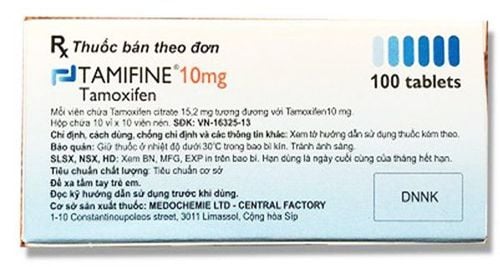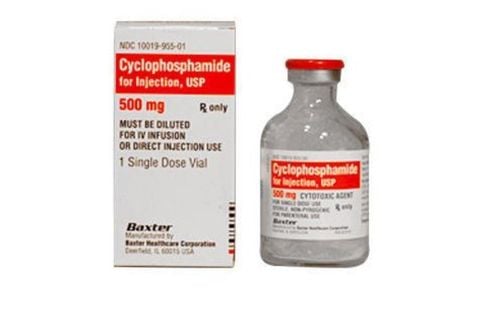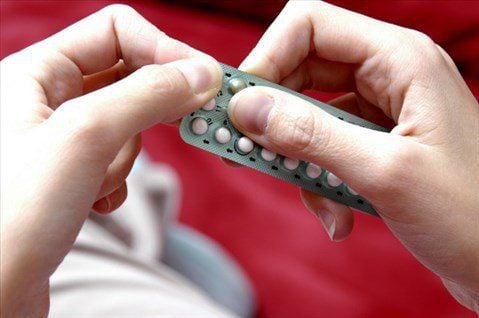This is an automatically translated article.
Puregon is indicated for the treatment of infertility, especially in women, for the treatment of hypogonadism due to a decrease in gonadotropins that decrease spermatogenesis. Patients should begin treatment with Puregon under the supervision of a physician experienced in the treatment of infertility.1. What effect does Puregon have?
Puregon contains the main ingredient is Follitropin β (follicle-stimulating hormone-FSH) 300UI, which is a hormone that stimulates recombinant follicles, has an effect on the maturation and growth of ovarian follicles as well as ovarian follicles. steroid production in the gonads. For women, levels of the hormone FSH are important for the initiation and development of ovarian follicles, determining the number and timing of follicle maturation. Therefore, Puregon can be used to stimulate follicular growth and stimulate steroid production in cases of gonadal dysfunction. In addition, Puregon can be used to promote the development of multiple follicles in assisted reproductive protocols such as in vitro fertilization, embryo transfer (IVF/ET implantation), gamete transfer into the fallopian tubes (technologically). ZIFT technique) and intracytoplasmic sperm injection (ICSI technique). After the patient is treated with Puregon, hCG is usually given to stimulate the final maturation of the follicle and induce ovulation.2. Indications of Puregon
Puregon is indicated for the treatment of female infertility in the following cases:
Patients who do not ovulate (including polycystic ovary disease), women who do not respond to treatment with Clomiphene citrate, ... Stimulating the development of multiple follicles in assisted reproductive regimens such as in vitro fertilization/embryo transfer (IVF/ET implantation), intra-fallopian transfer of gametes and intracytoplasmic sperm injection. Puregon is indicated for the treatment of men in the following cases:
Patients with hypogonadism due to decreased gonadotropin (hypogonadotropic hypogonadism), decreased spermatogenesis.
3. Contraindications of Puregon
For men and women, do not use Puregon in the following cases:
The patient has a history of allergy or hypersensitivity to any of the ingredients of Puregon. Patients with tumors in the ovary, breast, uterus, testicles, pituitary gland or hypothalamus. Patients with primary hypogonadism. Other contraindications of Puregon for women:
Patients with vaginal bleeding of unknown cause or undiagnosed disease. Patients with ovarian cysts or abnormally enlarged ovaries that are not related to polycystic ovary syndrome (PCOS). Patients with malformations of the reproductive organs are not suitable for pregnancy. Patients with uterine fibroids are not suitable for pregnancy. Patients with ovarian cancer, uterine or breast cancer, hypothalamic-pituitary gland tumor.
4. Dosage and usage of Puregon
Clinical use of Puregon can be administered subcutaneously or intramuscularly. Patients should begin treatment with Puregon under the supervision of a physician experienced in the treatment of infertility. Because the response of the ovaries to exogenous gonadotropins varies from person to person and between individuals, the dose of Puregon in each patient population is also different. During treatment, patients should be monitored periodically with ultrasound and oestradiol levels. No ovulation:
The starting dose is usually 50U/time x 1 time/day, maintained for at least 7 days. If there is no ovarian response, the daily dose may be gradually increased until plasma estradiol concentrations indicate a pharmacodynamic response and/or follicle growth occurs. Thereafter, the patient was maintained on dose until preovulatory conditions were achieved. Usually, after 7-14 days of treatment, the effect is achieved. Then stop taking Puregon and ovulation can be induced by injection of human chorionic gonadotropin (hCG). If the number of response follicles is too high or the test shows that the plasma estradiol concentration increases too rapidly, for example, the daily estradiol concentration more than doubles for 2 to 3 consecutive days, the daily dose should be reduced. Because follicles larger than 14mm in diameter are fertile, having multiple follicles exceeding 14mm during preovulation carries a risk of multiple pregnancy. In this case, the patient should stop taking hCG and use contraception to prevent multiple pregnancy. Stimulating the development of follicles in the regimens to support fertility in women:
The starting dose can be from 100 to 225 IU/day, maintained for at least the first 4 days. Then, based on the response of the ovaries to treatment, adjust the dose in each patient. Usually, a suitable maintenance dose is 75 - 375 IU for 6 - 12 days or longer if needed. Puregon can be used alone or in combination with a GnRH analogue for the purpose of preventing premature lutealization in patients. Ovarian response is monitored based on ultrasound and blood estradiol tests. On ultrasound, at least 3 follicles with a size of 16 - 20 mm and a good estradiol secretion response (blood estradiol level about 300 - 400 picrogram/ml (1000 - 1300 pmol/l) for each sugary follicle diameter larger than 18mm), hCG will be used to induce ovulation. The procedure to remove follicles is carried out at 34 to 35 hours after the patient injects hCG.
5. Puregon drug side effects
Patients using Puregon may experience some unwanted side effects as follows:
Reactions at injection site are uncommon: Pain, rash, swelling, anaphylaxis,... Ovarian hyperstimulation syndrome Eggs include: Pelvic pain and/or congestion, abdominal pain, abdominal distension, breast discomfort and ovarian enlargement. Ectopic pregnancy, ectopic pregnancy, miscarriage, and multiple pregnancies are also possible. And these side effects are thought to be related to assisted reproductive technology or assisted pregnancy. Rare side effects: Vascular embolism, thrombosis.
6. Be careful when using Puregon
Patients using Puregon should note the following information:
Patients need to be excluded from uncontrolled endocrine diseases before using Puregon such as: Pituitary dysfunction. , thyroid dysfunction, adrenal gland. Patients should begin treatment with Puregon under the supervision of a physician experienced in the treatment of infertility. The rate of ectopic pregnancy may be increased in infertile women receiving assisted reproductive therapy, especially in vitro fertilization. There is an increased risk of multiple pregnancy in infertile women who are receiving assisted reproductive therapy. Before using Puregon to treat female infertility, patients should have ultrasound and estradiol levels tested before treatment and during treatment on a regular basis. Ultrasound can be used to diagnose ovarian hyperstimulation in patients. If unintended ovarian hyperstimulation occurs, Puregon should be discontinued and should be prevented from becoming pregnant, and hCG should not be used. Clinical signs and symptoms of mild ovarian hyperstimulation syndrome include: Abdominal pain, diarrhea, nausea, and presence of mild to moderate ovarian cysts. Severe symptoms such as: Ascites, pleural effusion and weight gain. Arterial thromboembolism may occur. Women with known risk factors for thrombosis, such as a personal or family history of thromboembolism, obesity, or established thrombophilia, may be at increased risk of venous or arterial thromboembolism. pulse after Puregon treatment, even in the absence of ovarian hyperstimulation syndrome (OHSS). In these women, the benefits of IVF treatment should be weighed against the risks. However, it should be borne in mind that pregnancy itself also increases the risk of blood clots. Note for pregnant women: Puregon is contraindicated during pregnancy. In case of accidental use of the drug during pregnancy, it is necessary to consult a specialist for advice. Caution for lactating women: There are no studies to indicate whether Puregon is excreted in breast milk. If Puregon is secreted into breast milk, the drug will be degraded in the infant's gastrointestinal tract, causing unwanted side effects. In addition, Puregon may affect the milk production of pregnant mothers. Attention to those who drive and operate machines: People who are driving, operating machinery or doing work that requires alertness should use caution when using Puregon. It is recommended to use the drug under medical supervision. Above is all information about Puregon drug, patients need to carefully read the instructions for use, consult a doctor / pharmacist before using. Note, Puregon is a prescription drug, patients absolutely must not buy and treat at home because they may experience unwanted side effects.













